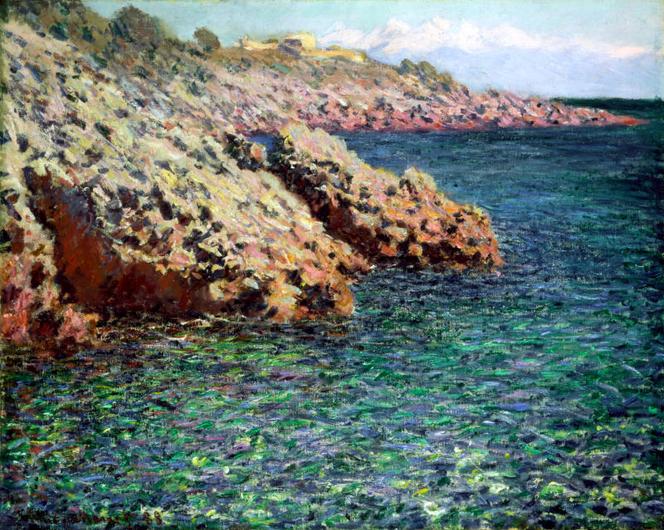


One hundred and forty years ago, Claude Monet from Normandy discovered, in the company of Auguste Renoir, what was not yet called the Côte d'Azur, but simply the Riviera. One of "[those] stupid countries where it never rains," as Brassens sang; where the light is strong, but too constant for a boy who grew up in Le Havre – especially when he's an Impressionist – and where the trees wiggle at the slightest gust of wind when you try to paint them (Monet always preferred the more stable apple trees to the palm trees of the South.) "For him," said Marianne Mathieu, curator of the "Monet in Full Light" exhibition, held at the Grimaldi Forum, Monaco, until Sunday, September 3, "the motif must not move, it's what's between it and the motif that can move!" The only movement tolerated is that of the sky. But in the South, the sky doesn't change much.
However, and this is Mathieu's thesis, each of his three long stays in the Mediterranean was an opportunity for Monet to radically transform his work. She has brought together some one hundred works from all over the world, some of which are rarely exhibited: This alone justifies the trip, as we won't be seeing them together again any time soon. Secondly, one of the qualities of the Grimaldi Forum is that its spaces are completely modular, and the picture rails can be positioned as desired: The staging is well thought out, allowing us to take a step back from the paintings, which is not possible in every exhibition space. This shines through in the rooms devoted to the Water Lilies.
"Thanks to this, I've seen paintings that I thought I knew like I'd never seen them before," said a delighted Mathieu, who worked at the Musée Marmottan-Monet in Paris for a good 10 years. "And especially in Monet's final work, which is a space in itself. The fact that there are no architectural constraints in the hanging, which we build around the works, allows us to put them in perspective and approach them in a totally new way." Last but not least, the optical blend of colors, which are not mixed but juxtaposed, comes into its own here. Step closer and everything becomes blurred, step back and everything becomes clear.
Fortunately, the hundred-odd works on display are not limited to those he painted during his three stays on the Riviera (23 of them are brought together here for the first time in Europe, as his dealer, Paul Durand-Ruel, did not see fit to exhibit them together in his day). We start with a canvas from 1867 and end with his final works, painted in Giverny. Those painted in the South appear all the more singular. The exhibition is therefore entitled "Monet in Full Light": To paint light is to paint a fleeting moment, but one sometimes depicted several decades apart, like the two customs huts perched on cliffs in the Pays de Caux, one from 1867, the other from 1897. "If he's able to paint the same theme 30 years apart," said Mathieu, "it's because the motif is secondary and the subject of his painting is elsewhere. His aim is to paint the moment."
You have 64.21% of this article left to read. The rest is for subscribers only.
